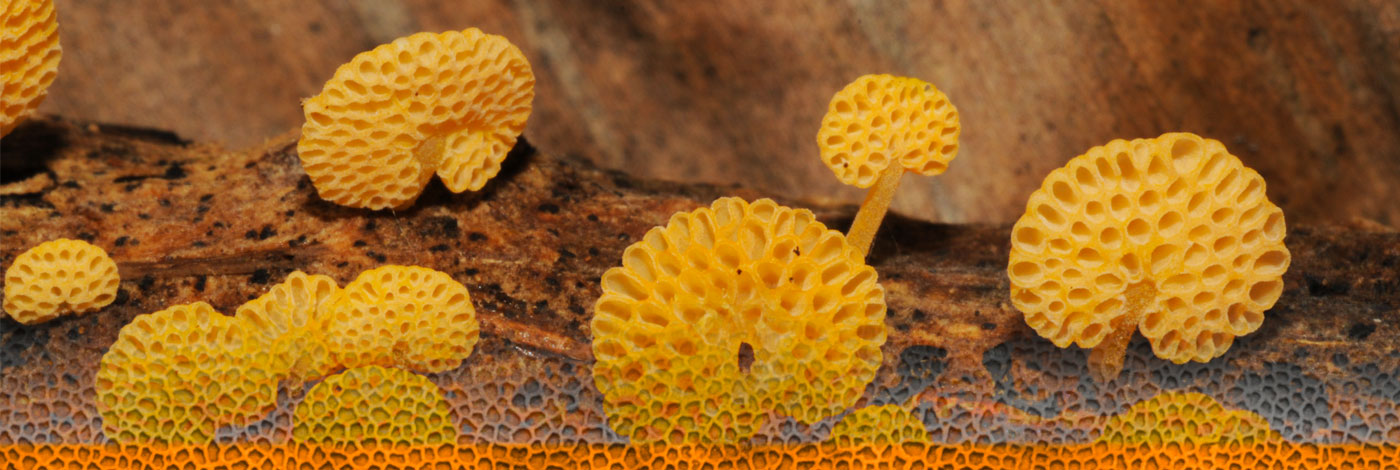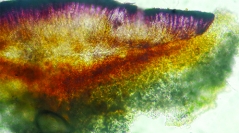

 Cryptogamie, Mycologie
44 (2) - Pages 11-25
Cryptogamie, Mycologie
44 (2) - Pages 11-25Four new species of Tephromela M.Choisy are described here. Three are corticolous species from Brazil: T. multireflexa Aptroot & M.F.Souza, sp. nov., collected in the Chapada dos Guimarães, municipality of Cuiabá, a Cerrado region in the state of Mato Grosso; T. obesimarginata L.A.Santos, Aptroot & M.Cáceres, sp. nov., collected in Caraça, in Campo rupestre in Minas Gerais state; and T. vinacea L.A.Santos, Aptroot, Lücking & M.Cáceres, sp. nov., collected in the Parque Nacional Vale do Catimbau, municipality of Buique, a Caatinga region in the state of Pernambuco, with additional specimens from Mato Grosso do Sul. All are somewhat similar to T. atra (Huds.) Hafellner in morphological and anatomical features but differ chiefly in secondary chemistry, as well as partially in ascospore dimensions and substrate ecology: lichexanthone in the apothecial margins and α-collatolic acid in the medulla of the apothecial margin in T. multireflexa Aptroot & M.F.Souza, sp. nov.; lichexanthone in the thallus and the (unevenly thickened) apothecial margin in T. obesimarginata L.A.Santos, Aptroot & M.Cáceres, sp. nov.; and fatty acids in T. vinacea L.A.Santos, Aptroot, Lücking & M.Cáceres, sp. nov. Molecular data for T. vinacea L.A.Santos, Aptroot, Lücking & M.Cáceres, sp. nov. and T. obesimarginata L.A.Santos, Aptroot & M.Cáceres, sp. nov., demonstrate that they are not closely related to T. atra but form part of a previously unrecognized clade apparently restricted to South America, several of them remaining undescribed. A further new, saxicolous species, T. xanthonica Guzmán-Guillermo, sp. nov., is described from Brazil and Mexico; it is similar to T. obesimarginata L.A.Santos, Aptroot & M.Cáceres, sp. nov. and T. velloziae Kalb in producing lichexanthone in the thallus and apothecial margins, but differs in its substrate ecology and in having an areolate thallus. Two additional species described from Brazil are here combined into the genus: T. carassensis (Vain.) Aptroot & Lücking, comb. nov. and T. epichlorina (Vain.) Aptroot & Lücking, comb. nov. A key is given for the 17 Tephromela species now known from Brazil.
Phylogeny, ITS, lichenized fungi, cryptic species, new combinations, new species